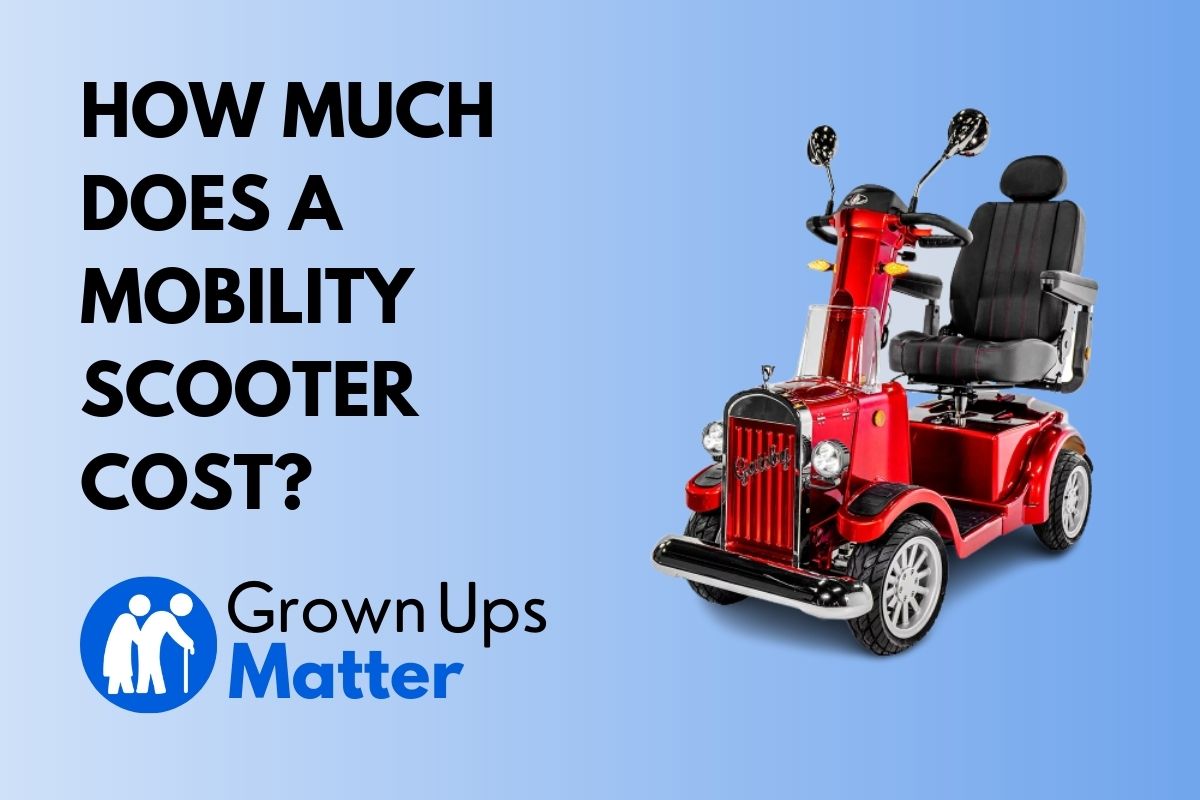If you or a loved one needs a mobility aid, a scooter may be a viable option to help maintain independence and improve quality of life.
But how much do they cost, and what should you look for when buying one?
In this article, we’ll explore the cost of mobility scooters and what factors can impact the price.
We’ll start by breaking down the different types of mobility scooters available, and what features you can expect to find at different price points.
We’ll also look at some key factors to consider when choosing a scooter, such as weight capacity, battery life, and portability.
Now, as you might know, personal scooters are not precisely cheap, so, we’ll also discuss insurance coverage, financing options, and other ways to make a mobility scooter more affordable.
Whether you’re shopping for a mobility scooter for yourself or a loved one, this article will provide you with valuable insights and practical advice to help you make an informed decision.
Key Takeaways:
- The average cost of a mobility scooter is $1,500, and the price range can go from $800 to over $5,000, depending on the brand, model, and particular type of vehicle.
- A good mobility scooter from a reputable brand such as Pride, Ewheels, or Drive Medical will be about $1,800, while the cheapest lightweight mobility scooters such as the Vive Health 3 start at $800.
- The type of scooter might be a big factor that determines its price, with different scooter types aimed at alternative use cases and priced accordingly.
- The price of scooters is affected by complex engineering and design, quality of materials, research, and development, safety and regulatory compliance, and special features.
- Insurance companies generally cover mobility scooters if they’re deemed medically necessary to maintain the user’s quality of life, and financing options are available from many durable medical equipment retailers.
Average Price of a Mobility Scooter
The average cost of a mobility scooter is $1500, but the overall price range can go from $800 to over $5000 depending on the brand, model, and particular type of vehicle.
These estimates are for brand-new units. You can find used mobility scooters for even half the price of a new one depending on their condition.
Another important thing to consider about mobility aid pricing is that in many cases, a big part of their cost is covered by insurance.
Coverage, however, will depend on whether you qualify for it or not based on your particular needs.
You can find out more about that in the article linked above.
How Much is a Good Mobility Scooter?
A good mobility scooter from a reputable brand such as Pride, Ewheels, or Drive Medical will be about $1800.
Again, prices vary with the type of scooter and particular model.
For instance, a good lightweight or foldable scooter could cost you around $1000, while a nice heavy-duty scooter might be priced at around $3500.
How Much is the Cheapest Mobility Scooter?
The cheapest lightweight mobility scooters such as the Vive Health 3 start at $800, with some alternatives probably a bit cheaper than that.
However you might find some off-brand alternatives at lower costs, but we do not recommend them.
We will discuss alternatives to get scooters at a discount later in this article.
Mobility Scooters Cost by Type
As I mentioned earlier, the type of scooter might be a big factor that determines its price.
Different scooter types are aimed at alternative use cases and are priced accordingly.
Here are some of the most common types and their average prices:
- Standard scooters: $1500
- Lightweight scooters: $1300
- Folding scooters: $1800
- Heavy-duty scooters: $3500
- All-terrain scooters: $5000
- Tandem scooters: $4000
5 Factors That Affect the Cost of a Mobility Scooter
As you might have noticed by now, personal scooters are not cheap, however, I would argue that their high prices are reasonable if you take into consideration their specific use cases and the research and development behind them.
Here are 5 factors that affect the price of scooters the most, other than their type, model, and brand:
- Complex Engineering and Design
- Quality of Materials
- Research and Development
- Safety and Regulatory Compliance
- Special Features
For a more detailed view of each of these variables I suggest you visit our article on why mobility scooters are so expensive:
Price Difference Between Brands
The personal scooter market has become very competitive in the last few years, and there is not much variance between the prices of comparable models among brands.
There are certain manufacturers such as Pride, or Ewheels, where you will see most of their offerings hovering around the averages I mentioned above, while other more premium brands such as AFIKIM position themselves at higher prices.
The thing with scooters, however, is that most of the time you pay for what you get.
A considerably more expensive scooter will likely have more features than others, such as extended-range batteries, or a higher weight capacity.
Other than that, if you are shopping for a new unit, I would recommend you choose based on availability and insurance coverage.
How Much Should You Spend on a Mobility Scooter?
How much you should spend on your powered scooter will depend on many factors, but perhaps the most important is the intended use case you will give it based on your needs.
Another influential point is insurance coverage if any, and if it is restricted to a specific brand, type, or model.
For detailed tips and things you should specifically look for in a scooter, you should check out our mobility scooter buying guide here:
Does Insurance Cover Mobility Scooters?
Contrary to what many think most insurance companies will cover mobility scooters, however, the caveat is that they would do it only if it’s deemed medically necessary to maintain the user’s quality of life.
For a more detailed view on this, you should check out our article on the topic:
Can You Finance a Mobility Scooter?
Given that the upfront cost of getting a scooter is so high, especially when not getting it through your insurance provider, most durable medical equipment retailers will offer financing options.
To discover what are the alternatives most likely available to you for financing your next mobility scooter, you should visit our post on the matter:
Ways of Getting a Discounted Mobility Scooter (Or Even Free!)
Apart from insurance and financing, there are plenty of other ways of getting a mobility scooter for a lower price, or even for free.
Of course, there are special conditions for most of them, but perhaps you qualify for some.
Check out 9 ways to get a discounted or even free personal scooter in this article:
Extra Costs of Owning a Mobility Scooter
Something important to have in mind, and that many people oversee is that owning a mobility scooter has extra costs other than the initial purchase price.
To begin with, even if you get insurance coverage, you will usually still have to afford 20% of the total vehicle’s price out of pocket.
After that, you might need to make certain adaptations in your home, such as widening doorframes or installing ramps to ensure it’s a safe space for operating the device.
Also, maintenance, servicing, and repair costs should be considered and can ascend to up to $200 a year.
Can You Rent a Mobility Scooter?
If the full price of a mobility scooter is too much for you, and your intended use case makes sense for it, renting an electric personal scooter is a great alternative, that can end up being very cost-effective.
A weekly scooter rental can cost around $250, and it can be a great idea for moving around during a vacation, for instance.
Learn more about scooter rentals in the following piece we wrote:
Do You Need a Prescription for a Mobility Scooter?
Finally, if you were wondering, you don’t need any kind of prescription or medical recommendation to get a scooter on your own.
Anyone can buy such a mobility aid from a retailer without giving any explanations to nobody.
However, if you intend on getting insurance coverage, a medical prescription among other things will be required by your provider.
For more information about this, please check out the following article:
All the claims made in this article are only for informational purposes, based on the writer’s experience and not clinical advice. You should always consult your physician or physical therapist if you have any doubts about how this applies to your specific case.

Rami is an economist with a passion for personal finance and a desire to help people make the most of their retirement years. He’s also the tech mind that made all of this possible, and a marketing enthusiast. In his articles, Ramiro offers real-life advice and resources for seniors looking to manage their finances and make the most of their retirement savings. He is dedicated to helping his readers live comfortably and securely during their golden years.

